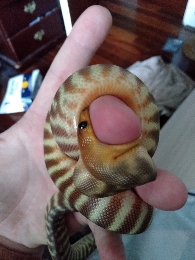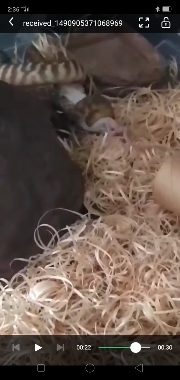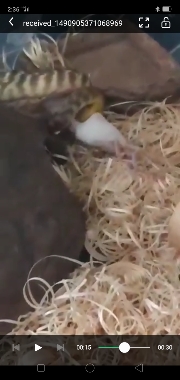Firstly, when you move a snake into a totally new environment, it is better to leave it alone and give it a chance to settle in by leaving it alone for a week or two. From the number of times you seem to have been bitten over the three weeks you have it, you evidently have not done this.
Did you ask the dealer if it has been handled, apart from being removed for cleaning and possibly feeding? My guess is no, because they just don’t have the time. You ought to be aiming to get it settled, feeling secure and comfortably feeding before you even consider handling. Be consistent and establish some clear routines, otherwise the snake does not know what to expect and you create an on-going problem.
Do you know how and when it was fed by the dealer? That would help, because you know whether you have to retrain the snake or just continue as was. Did the dealer just dangle the food item in front of it, or wobble it or have to ouch the side of the mouth or head to elicit a strike. Or was the prey item simply left at the opening to the hide. I will recommend that you buy a set of long tongs or an automotive extended grapping tool to hold prey items. Holding prey items with your fingers may appeal but it leaves the scent of rodent on your fingers and is inviting potential trouble zas the snake gets bigger. You might decide to only feed in the enclosure, then use a snake hook or pillow slip every time you take it out, just to let it know no food is on offer. Once the snake is well and truly habituated to this, you can dispense with the hook or pillow slip. Also, learn to read your snake’s behaviour. It will let you know if it does not want to be taken out.
I‘m not sure what “struggled getting it down” means but they take time to line up their food item so they can then slowly march their jaws over it. And sometimes they take longer than other times. Do what Herpetology suggested to determine the most appropriate sized rodent. If you do not have access to a set of scales, then you can judge it by size. The girth of the feed item should be slightly bigger than the mid-body girth of the snake and be clearly seen as small bulge when in the snake’s stomach. That sized feed once a week is pretty average for a young, growing snake, but can be dropped to every 5 days for while if warranted, or similarly extended to 10, depending on the snake and the circumstances.
By the way, there’s no need to put anything into its mouth to get it to let go. The smell alone of metho or mouthwash on a cotton bud wafted under the nostrils will do the trick. Sorry where I have repeated stuff you have already been told. Just trying to put it into context.
[doublepost=1589782873,1589738440][/doublepost]There are a few more points worth mentioning…
Just because your snake appears hungry, usually because it can smell food or thinks food is available, does not mean you should feed it. Snakes are opportunistic feeders i.e. in nature they never know when or if they’ll get their next meal, so they will eat whenever the opportunity presents itself.
Providing a snug fitting hide will help the snake feel more secure. Particularly if its click-clack is made of clear plastic. To the snake a snug fitting hide means a predator will have trouble opening its mouth to grab it. Many of the commercial products are far too big. Anything from a pill box to a small upturned pot plant tray, with a hole just big enough for the snake to fit through, is good.
When you do start handling it, do so at a time day that is very different to when you feed it. Keep it to a few minutes to begin with and gradually build up. Keep it to two or three times a week to begin with and increase the frequency if you want and the snake seems accepting of it.







